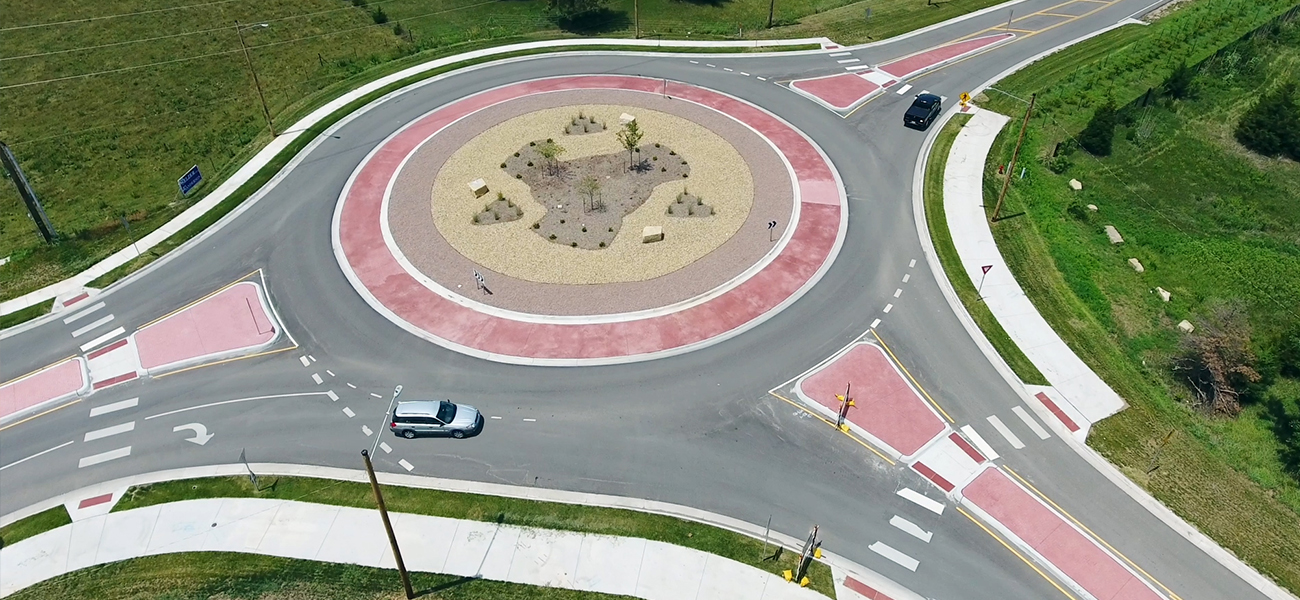

INSIGHT
Five ways to design for traffic safety
Connect with us
Traffic safety is a foremost consideration for communities planning to construct new roadways or rehabilitate and redesign existing ones. Intersection design can make a significant difference in traffic safety statistics. In fact, each year about one-fourth of traffic fatalities and about half of traffic injuries in the United States are attributed to intersections, according to the Federal Highway Administration.
The likelihood and severity of intersection crashes is largely influenced by three factors: vehicle speed, collision angle and the number of conflict points. Traffic analysis can provide insight around how to mitigate these risk factors, while also highlighting other considerations such as current and projected future traffic volumes.
Analysis also typically includes the corridor’s five-year crash history, existing conditions, adjacencies and concerns like traffic safety or delays. After performing the base-level analysis and collaborating with stakeholders on key issues, there are numerous ways to design for traffic safety.
Roundabouts
By design, roundabouts address all three risk factors influencing the severity of an intersection crash. They have a traffic calming effect because vehicles are forced to slow down in order to navigate the curve. They drastically reduce the number of conflict points, from about 32 conflict points at 4-way intersections to only eight conflict points in a single-lane roundabout. When there are collisions at roundabouts, they are more likely to be angled collisions when vehicles are entering or exiting, as opposed to 90-degree side-impact collisions more commonly seen at traditional intersections. This fact, combined with traffic calming effects, equates to less severe crashes at roundabout intersections.
Signal optimization
By creating a more efficient, seamless motorist experience, optimized traffic signals can mitigate driver frustration related to travel delays—and calmer drivers enhance overall roadway safety. Traffic signal optimization can lessen the risk of rear-end collisions simply by reducing the number of times vehicles must stop along a corridor.
Signal optimization can also be a cost-effective solution for traffic congestion, as opposed to more expensive alternatives like adding more travel lanes. Traffic modeling can help determine whether improved signal timing could postpone infrastructure investments—like adding lanes—by several years. In the meantime, this could allow budget allocation toward other safety improvements elsewhere along the corridor.
Access management
Access management is a simple way to improve safety along the corridor. Essentially, safety increases every time an entrance to a parking lot or development is consolidated with another. It can be challenging to negotiate this design with existing developments, but compromise solutions should be considered. Strike a balance between safety and ease of access with options like frontage roads or “right-in, right-out” to prevent left turns across traffic.
Road diet
Reducing the number of lanes on a roadway can enhance safety overall, including intersection safety. Traffic modeling will show whether this is a viable option for handling current and projected future traffic volumes. Removing lanes, known as a “road diet,” creates the potential for more options around streetside parking, outdoor amenities like pocket parks, and pedestrian and cyclist mobility.
Complete Streets concepts
Complete Streets are designed for the safety and mobility of all users, including drivers, pedestrians, cyclists and public transportation riders. Specific policies are set at the state, regional and local levels, but typically include a range of traffic safety solutions, such as:
- Traffic calming options like road diets or raised intersections
- Curb extensions at intersections to make crosswalks shorter
- Reverse angle parking
- LED street lighting
Ultimately, there are three levels of intervention for traffic safety issues: short-term, mid-term and long-term. A Professional Traffic Operations Engineer (PTOE) can help plan several years out with escalated interventions to address current and future needs. Infrastructure planning is a big investment, so take the time to analyze the data, consult the experts and make a plan that will serve the community well into the future.
Tell us about your project
We’d love to work with you. Tell us the services you are seeking and one of our team members will connect with you.